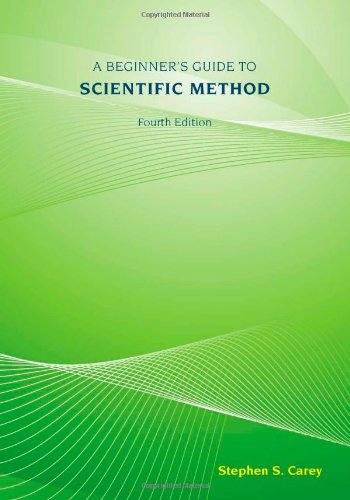

Most ebook files are in PDF format, so you can easily read them using various software such as Foxit Reader or directly on the Google Chrome browser.
Some ebook files are released by publishers in other formats such as .awz, .mobi, .epub, .fb2, etc. You may need to install specific software to read these formats on mobile/PC, such as Calibre.
Please read the tutorial at this link. https://ebooknice.com/page/post?id=faq
We offer FREE conversion to the popular formats you request; however, this may take some time. Therefore, right after payment, please email us, and we will try to provide the service as quickly as possible.
For some exceptional file formats or broken links (if any), please refrain from opening any disputes. Instead, email us first, and we will try to assist within a maximum of 6 hours.
EbookNice Team

Status:
Available0.0
0 reviews
ISBN 10: 1111305552
ISBN 13: 978-1111305550
Author: Stephen S. Carey
This concise yet comprehensive guide provides an introduction to the scientific method of inquiry. You will not only learn about the proper conduct of science but also how to recognize and question factors such as pseudoscience, untestable explanations and fallacies. Compact enough to be used as a supplementary book, yet comprehensive enough in its coverage to be used as a core book, this book assists users in using the scientific method to design and assess experiments.
1. SCIENCE. Just What is Science? Asking Why. Scientific Method. The Consequences of Science. Scientific Method in Daily Life. Things to Come. Exercises
2. OBSERVATION. Making Accurate Observations. Anomalous Phenomena. Observing Anomalies. The Burden of Proof. Concept Quiz. Exercises
3. EXPLANATION. Explanation, Theory and Hypothesis. Causation. Correlation. Causal Mechanisms. Underlying Processes. Laws.
Function. The Interdependence of Explanatory Methods. Rival Explanations and Ockham’s Razor. Explanation and Description. Ultimate Explanations. Concept Quiz. Exercises.
4. EXPERIMENTATION. The Basic Method. Confirmation and Rejection. Designing a Good Test. Real World Experiments. How Not to Design a Test. Conceptual Vagueness. Testing Extraordinary Claims. Predictive Clarity. Bias and Expectation. Concept Quiz. Exercises.
5. ESTABLISHING CAUSAL LINKS. Causal Studies. Ruling Out Chance. Multiple Causal Factors. Randomized, Prospective and Retrospective Studies. Reading Between the Lines. Concept Quiz. Exercises.
6. FALLACIES IN THE NAME OF SCIENCE. What is a Fallacy? False Anomalies. Questionable Arguments by Elimination. Illicit Causal Inferences. Unsupported Analogies and Similarities. Untestable Explanations and Predictions. Empty Jargon. Ad Hoc Rescues. Exploiting Uncertainty. Science and Pseudoscience. Concept Quiz. Exercises.
a beginner's guide to constructing the universe
a beginner's guide to the scientific method
a beginner's guide to the universe
a beginner's guide to constructing the universe pdf
a beginner's guide to constructing the universe - michael schneider
Tags: Stephen Carey, A Beginne s Guide, Scientific Method